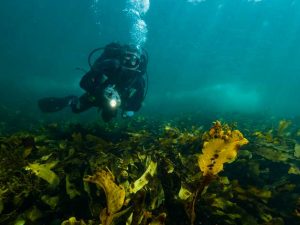The Sultanate of Oman abounds with various underwater/submerged cultural heritage, which is witness to its role as an axis of the human civilizations since the early prehistoric periods. Since several ships, coastal human settlements and aircrafts containing collectibles with cultural and economic significance sunk in the Omani territorial waters, it prompted the Ministry of Heritage and Tourism (MHT) to establish a directorate for the underwater antiquities, the first unit of its kind in the GCC region. Ayyoub Nagmoush Al-Busaidi, Director, Directorate of the Underwater Submerged Antiquities, Ministry of Heritage and Tourism (MHT), said, “The underwater archaeological sites and ships are a source of precious historical information as they contain antiquities of human existence. The archaeology aims to analyze the antiquities, identify the origins and the development of civilizations.” “Underwater archaeology is a scientific discipline that deals with the studying sites, man-made objects, human remains, and submerged landscapes. This science should be placed within its broader framework of marine archaeology, which studies human relationships with oceans, lakes, and rivers, while complementing it with navigation,” he added. In 2012, the MHT has launched a program aiming to identify the resources and components of these antiquities, enumerating them, and determining their nature, and protecting them from illegal trade/natural factors, he added. The department is now working on formulating rules for protection, management, employment, conducting surveys, excavations, restoration, preserving, documenting archaeological sites, analyzing the results, and presenting them to the local and international community. It may be noted that Oman’s maritime history dated back to the 3 BC, when commercial activity flourished in Mesopotamia and the Nile Valley. After Omanis gained good expertise in navigation in the 18th century, Muscat emerged as one of …
Read More »
Breaking News
- Switzerland Tourism webinar showcasing Travel Switzerland and Rail Europe on 2nd Sep 2025 (Tue) at 3:00 pm IST
- Government intends to encourage the creation of convention centres and hotels close to such airports: MoCA
- Regional language marketing has been such a success story for large operators like Thomas Cook India: Romil Pant
- PPP airports fuel 87% of non-aero revenues; India’s flyers to cross 600 mn by 2030: Knight Frank India
- Burjis Mehta re-elected as President of Skal Bombay 144 for term 2025-27
- Cross Hotels & Resorts announces the opening of 75-key Away Bangkok Sukhumvit
- SriLankan Airlines marks 46 years with travel treats for passengers
- Hahnair appoints Travesla as its new service partner in India
- Barceló Nasandhura Malé, represented by IRIS Reps, to redefine MICE in the Maldivian capital
- ICRA projects aviation industry losses rising to ₹105 billion FY2026
- Ayush, yoga and ‘Heal in India’ flagged as booming inbound medical tourism segments
 Tourism Breaking News
Tourism Breaking News
